Bentwood Box Item Number: Nb3.1347 a-b from the MOA: University of British Columbia
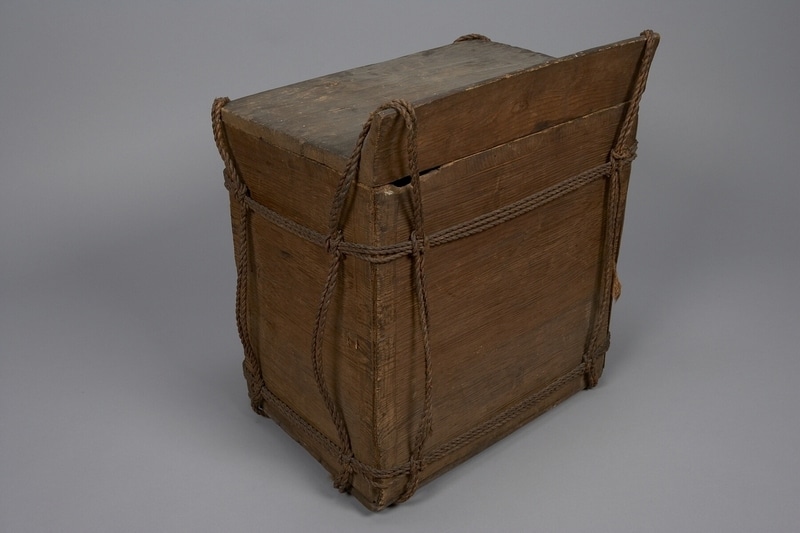
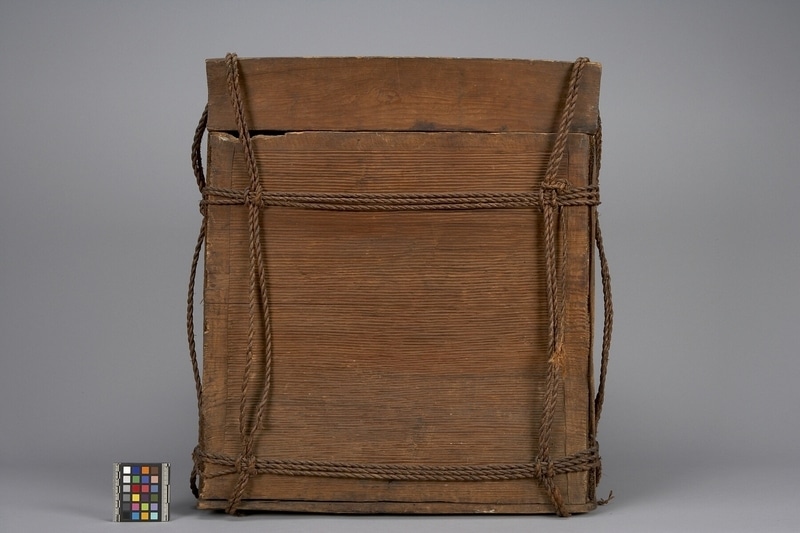

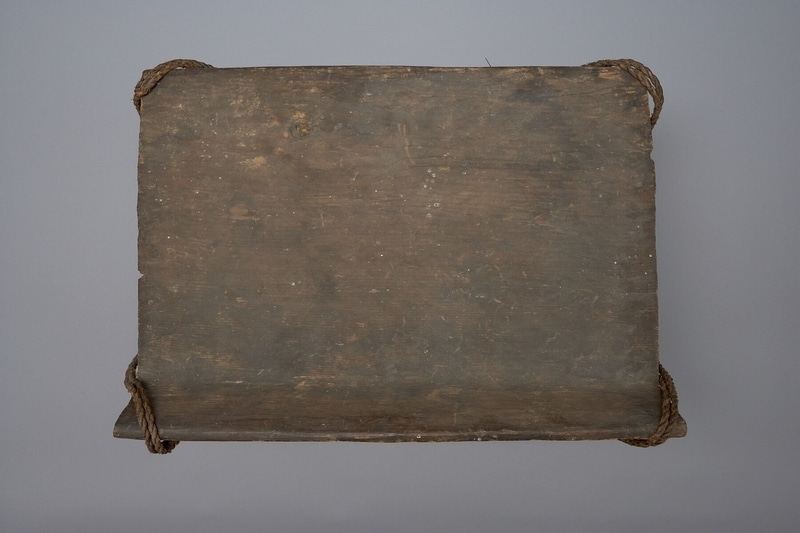
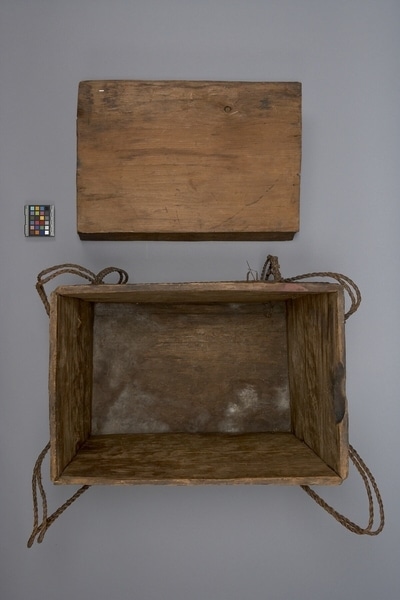
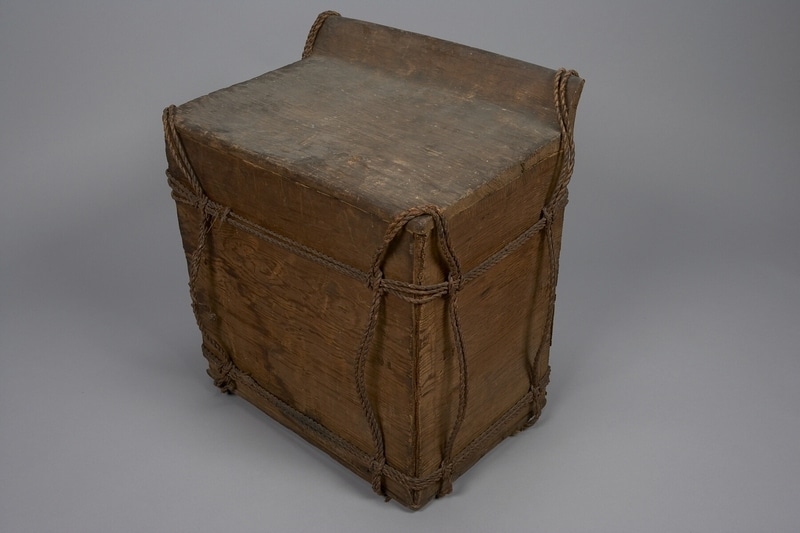
Description
Bentwood box; kerfs cut both on exterior and interior, fourth corner nailed; three sides, except back, decorated each with one panel of horizontal, finely chiselled grooves. Lid (part b) with adzed surface is slightly wedge shaped, with ridge at back projecting upwards. Cedar stitching on front and right side over split. Base pegged (?). Box lashed and knotted on all four sides with two-ply cedar bark rope, loose and fallen down close to base. Underside of box has a different type of rope used.
History Of Use
Bentwood boxes were used primarily for storage of food, implements, and ceremonial regalia, but were also used for cooking and serving food. They were trade goods or gifts, and were symbols of wealth and prestige. Boxes used for ceremonial purposes were usually more highly decorated than those for utilitarian use. This box was for storage. The rope lashings were for travelling. Untying the top lacing, which was once tight over the box, allowed for the removal of the lid.
Specific Techniques
Bentwood, or kerfed-corner, containers are constructed by a process unique to the Northwest Coast Aboriginal peoples. The carver begins with a single straight-grained plank of red cedar, or sometimes yellow cedar, spruce, or yew. The surface of the plank is finished with chisels, adzes, and knives; in earlier times, it was smoothed further with sandstone or dried sharkskin. Then three parallel kerfs, or grooves, are carved out at measured points across the width of the board, at right angles to the long edge. The kerfs, which will become three corners of the box, allow the board to be steamed until the wood fibres are softened, and then carefully bent to form a box with symmetrical sides. The final corner, as well as a fitted base, are joined and fastened with pegs (through drilled holes) or laced with spruce root or twisted cedar withes (branches). Storage boxes also have fitted lids of cedar, hollowed from the inside. Finally, painted compositions may be applied to the completed box and shallow carving added to bring the forms into relief. A well-made bentwood box is watertight. Historically, most boxes were used to store preserved foods and material goods; plain cooking boxes could be used to steam or boil food by adding water and heated stones.
The lashing rope is twisted from a knot placed between a person's toes, or hung and twisted by stones attached to ends, twisting single strands as two strands are crossed over.
Narrative
Wastell said he collected the belongings in this donation in Telegraph Cove in the 1920s.
Item History
- Made in British Columbia, Canada before 1930
- Collected in Telegraph Cove, British Columbia, Canada during 1925
- Owned by Fred Wastell before February 7, 1983
- Received from Fred Wastell (Donor) on February 7, 1983
What
- Name
- Bentwood Box
- Identification Number
- Nb3.1347 a-b
- Type of Item
- box
- Material
- metal, cedar wood and cedar bark
- Manufacturing Technique
- cut, adzed, kerfed, gouged, steamed and bent
- Part A
- height 62.5 cm, width 61.0 cm, depth 42.0 cm
- Part B
- height 10.3 cm, width 56.5 cm, depth 39.0 cm
Who
- Culture
- Kwakwaka'wakw
- Previous Owner
- Fred Wastell
- Received from
- Fred Wastell (Donor)
Where
- Holding Institution
- MOA: University of British Columbia
- Made in
- British Columbia, Canada
- Collected in
- Telegraph Cove, British Columbia, Canada
When
- Creation Date
- before 1930
- Collection Date
- during 1925
- Ownership Date
- before February 7, 1983
- Acquisition Date
- on February 7, 1983
Other
- Condition
- fair
- Current Location
- Case 39
- Accession Number
- 0851/0005 a-b